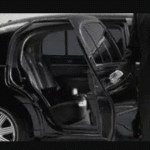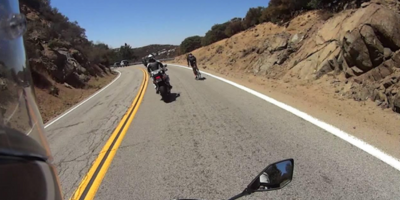When you’re behind the wheel on a breezy highway or a gusty backroad, you probably feel safe and steady in your car. But imagine being on two wheels instead of four. For motorcyclists, windy weather isn’t just inconvenient—it can be downright dangerous. That’s why overtaking a motorcyclist during windy conditions requires extra caution and, more importantly, additional room.
Motorcyclists face unique challenges on the road, especially when weather conditions aren’t ideal. In this blog, we’ll explore why it’s so critical to allow extra room when overtaking a motorcyclist, especially on windy days, and how that simple act of patience can save a life.
Why Windy Weather and Motorcycles Don’t Mix
Unlike cars, motorcycles are much lighter, have a smaller surface area, and are more exposed to the elements. Wind can affect a motorcyclist in several ways:
1. Lateral Wind Gusts
Sudden side winds can push a motorcycle off course, especially on bridges, open plains, or near large vehicles that create wind tunnels. Even a brief gust can cause a rider to veer several feet sideways.
2. Reduced Balance and Stability
Motorcycles rely on balance, and strong winds can compromise a rider’s ability to stay upright, especially during low-speed maneuvers like lane changes or overtaking.
3. Fatigue and Strain
Riding in windy weather requires constant counter-steering and muscle effort. Riders often experience fatigue more quickly, which may reduce reaction time.
4. Flying Debris
Winds often carry leaves, twigs, dust, or road debris, which can reduce a motorcyclist’s visibility or force them to make sudden movements.
The Risk of Overtaking Too Closely
Now that we understand the added risks wind creates for motorcyclists, let’s talk about what happens when overtaking a motorcyclist in those conditions without enough space.
1. Wind Displacement from Your Vehicle
Your car or truck displaces air as it passes. This sudden shift can create a strong draft or vacuum effect that affects the motorcyclist’s balance. In windy weather, this effect is amplified and can push the rider off course—toward the shoulder, into another lane, or worse, into oncoming traffic.
2. Panic or Overcorrection
When a vehicle passes too closely during windy conditions, the motorcyclist may panic or instinctively swerve away. A sudden overcorrection at high speed could lead to a crash.
3. Limited Escape Routes
If a motorcyclist is boxed in—say, by a car on one side and a guardrail or ditch on the other—then a gust of wind becomes much more dangerous. With nowhere to safely correct or recover, a fall becomes more likely.
The Golden Rule: Give Motorcyclists Room—Lots of It
The recommended safe passing distance in normal conditions is at least 3 to 4 feet. But in windy conditions, doubling that space is the safest choice. Here’s how to do it right:
✅ Wait for a Wide Open Space
Only pass when you have clear visibility and ample room. Avoid overtaking near curves, intersections, or narrow bridges.
✅ Use Your Signal and Move Over
Always use your turn signal to indicate your intent, and fully move into the next lane if it’s safe. If you’re on a two-lane road, wait until there’s no oncoming traffic and give a full lane’s worth of space.
✅ Pass Steadily and Smoothly
Avoid sudden acceleration or swerving. Pass at a steady, controlled speed so the rider isn’t caught off guard.
✅ Don’t Cut Back Too Soon
Many drivers make the mistake of overtaking and immediately merging back in. Give the motorcyclist enough time and space before returning to your lane—ideally, until you can fully see them in your rearview mirror.
Real-Life Scenario: The Danger in Action
Picture this: a rider is cruising along a country road on a windy spring day. A car decides to overtake but only leaves two feet of space. Just as the car passes, a gust hits the rider. They try to adjust, but the car’s wind draft worsens the situation. The rider veers off the shoulder and hits loose gravel, leading to a slide and a crash.
Now imagine if that driver had left an extra few feet, or waited for a clearer stretch to pass.
That’s the difference extra room can make.
Common Myths About Overtaking a Motorcyclist
Let’s bust a few myths that might be putting motorcyclists in danger:
❌ Myth 1: “They’re smaller, so they need less space.”
Motorcycles may be smaller, but their need for maneuverability is greater. Treat them as full vehicles, not half ones.
❌ Myth 2: “I’m just passing quickly—it’s not a big deal.”
Even a brief pass can destabilize a motorcycle. A moment is all it takes for disaster to strike.
❌ Myth 3: “If they’re out in windy weather, they must be fine with it.”
Riders often get caught in changing weather. Just because they’re riding doesn’t mean it’s safe or easy.
Tips for All Drivers in Windy Conditions
Regardless of whether you’re near a motorcycle, windy weather changes how we should drive. Here’s how you can stay safe and protect others:
-
Keep Both Hands on the Wheel: You need full control of your vehicle to handle gusts.
-
Slow Down: Higher speeds reduce your reaction time and increase wind effects.
-
Watch for Motorcyclists, Cyclists, and Pedestrians: They’re the most vulnerable.
-
Avoid Distractions: Windy weather requires more focus—put the phone away.
-
Be Aware of Large Vehicles: Trucks, buses, and RVs create strong wind wakes—stay back.
The Legal and Ethical Responsibility
In many states, traffic laws require that drivers “share the road” and give motorcycles the full use of a lane. In the event of an accident caused by unsafe overtaking, the driver can be held legally liable for damages or even face criminal charges in extreme cases.
But even beyond legality, the ethical responsibility to protect vulnerable road users like motorcyclists should guide our decisions.
What Riders Wish Drivers Knew
If you ask motorcyclists about their biggest fear, many will say: “Drivers not seeing us, or not giving us enough room.”
So here’s what they want you to remember:
-
“We’re more affected by the weather than you are.”
-
“We need space to correct for wind and debris.”
-
“Your courtesy could prevent a crash.”
It Only Takes a Second to Save a Life
Every time you pass a motorcyclist, especially in challenging weather, you’re making a decision that could affect someone’s life. Choosing patience over hurry, and awareness over assumption, makes the road safer for everyone.
So next time you’re driving on a windy day and see a motorcycle ahead, don’t just pass with care. Give them the space they need to stay upright, stay safe, and get home to their loved ones.
FAQs
Q1: What’s the safest distance when overtaking a motorcyclist in windy conditions?
In ideal conditions, 3-4 feet is the minimum. In windy weather, aim to give a full lane of space—about 6 feet or more—to prevent wind turbulence from affecting the rider.
Q2: Should I wait to pass if it’s really windy or there’s oncoming traffic?
Absolutely. It’s better to wait for a clear, wide stretch of road than to pass in risky conditions. Overtaking a motorcyclist too soon can lead to serious accidents, especially during sudden gusts of wind.
Q3: Can passing a motorcycle too closely be considered illegal?
Yes. In many states, failing to provide safe passing space can be considered reckless or careless driving, and you could be cited or held liable if an accident occurs.
Final Thoughts
Windy weather demands extra care on the road—especially around motorcycles. By giving motorcyclists the room they need when overtaking, you’re not just following good driving practices—you’re protecting lives. Remember, overtaking a motorcyclist safely isn’t just courteous; it’s critical.
So the next time the wind kicks up and you find yourself behind a two-wheeled traveler, take a breath, give them space, and pass with care. A little patience goes a long way—sometimes to saving a life.
- Overtaking a Motorcyclist in Windy Weather? Here's Why Extra Room Could Save a Life
- Discover why giving extra space when overtaking a motorcyclist in windy weather is crucial for safety—and how it could help save a life.
- Overtaking a Motorcyclist in Windy Weather? Here's Why Extra Room Could Save a Life
Related posts:
 Discover essential tips and inspections you must do before buying second-hand cars for sale with confidence.
Discover essential tips and inspections you must do before buying second-hand cars for sale with confidence.
 Maximize Your Travel Budget: Save Big with Rentout’s 10% Early Bird Discount
Maximize Your Travel Budget: Save Big with Rentout’s 10% Early Bird Discount
 Luxury Mercedes Deals Sales & Purchase in Lahore – Spot MY Vehicle
Luxury Mercedes Deals Sales & Purchase in Lahore – Spot MY Vehicle
 How to Maintain Your Car Wash System for Long-Term Success and Optimal Performance
How to Maintain Your Car Wash System for Long-Term Success and Optimal Performance
 Jynxzi Net Worth in 2025: A Comprehensive Financial Overview
Jynxzi Net Worth in 2025: A Comprehensive Financial Overview
 The Rise of the Rubber Strap Watch: Performance Meets Modern Style
The Rise of the Rubber Strap Watch: Performance Meets Modern Style
 Heathrow Airport Cabs: Reliable and Comfortable Transfers to and from the Terminal
Heathrow Airport Cabs: Reliable and Comfortable Transfers to and from the Terminal
 MERTRA – MERTRAMERTRA | Official Clothing Shop Australia MERTRA – MERTRAMERTRA | Official Clothing Shop Australia
MERTRA – MERTRAMERTRA | Official Clothing Shop Australia MERTRA – MERTRAMERTRA | Official Clothing Shop Australia







